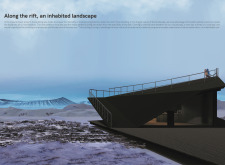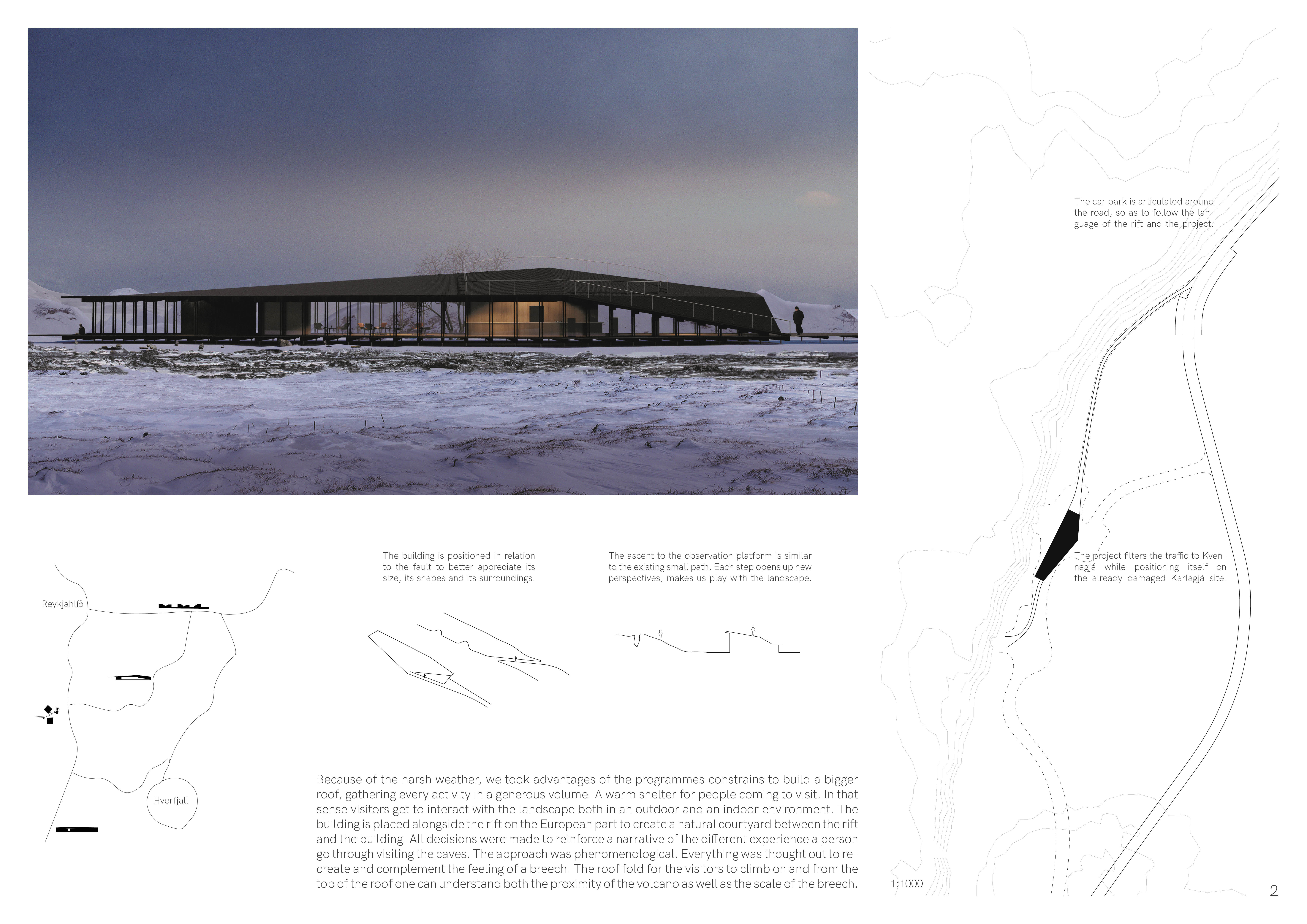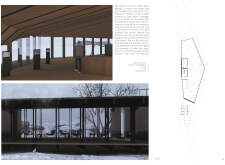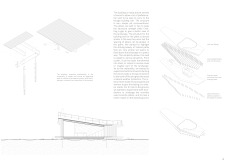5 key facts about this project
The design leverages a platform approach, allowing for multiple activities—including exhibitions, cafes, and observation points—all under one expansive roof. The arrangement is strategically positioned to harness existing foot traffic, promoting accessibility and encouraging exploration of the geological features in the vicinity. By orienting the building towards these natural phenomena, it fosters a deeper appreciation for the site’s geological context.
Material Selection and Construction
The Iceland Tower employs a thoughtful selection of materials that reflect the natural surroundings and enhance the structure's sustainability. The primary material is timber, chosen for its lightweight properties and ease of prefabrication, which accommodates efficient construction on-site. Burnt wood is utilized for its weather-resistant qualities and natural texture, while steel foundations provide structural integrity without the environmental costs associated with traditional concrete.
The roof of the tower serves not only as a protective layer but also as a communal space. This design choice encourages social interaction among visitors and promotes an immersive experience, inviting individuals to ascend and take advantage of the views. The extensive glazing employed in the design allows natural light to permeate the interior while offering uninterrupted sightlines toward the landscape, enhancing the overall visitor experience.
Unique Interaction with Landscape
The Iceland Tower distinguishes itself from conventional observation structures through its approach to integration with the landscape. Rather than focusing solely on height for vantage points, the design incorporates a cantilevered roof and split pillar systems that create a visually lightweight appearance. This minimizes disruption to the rugged terrain while optimizing space for varied activities across the tower's platform.
The architectural approach prioritizes environmental responsiveness. Researchers have informed the spatial organization by studying the site’s geological characteristics, promoting a narrative that connects visitors to the land. This allows for both passive enjoyment and educational opportunities regarding Iceland's geological phenomena.
Architectural Functionality and Experience
Core to the project’s functionality is its emphasis on movement and flow. The design facilitates continuous navigation between different areas of the tower, ensuring a user-friendly experience for visitors. The spaces within the tower are arranged to encourage exploration and interaction, allowing guests to transition comfortably from exhibition spaces to observation areas and social zones.
In essence, the Iceland Tower is engineered to be a catalyst for engagement with natural landscapes. Its architectural design encourages visitors not only to observe but to interact with the environment, fostering a relationship between the structure, the geology, and its users.
For a comprehensive understanding of the architectural plans, sections, and designs that detail the Iceland Tower, interested readers are encouraged to explore the project presentation for further insights into its innovative architectural ideas.


























